Subtotal: $
Checkout
When 86-year-old Siegfried Ellwanger died in 2010, it struck several who knew him that his name – it translates loosely as “peace victory” – had a special resonance for this combat veteran.
Like millions of Germans of his generation, Siegfried joined the junior branch of the Hitler Youth at ten, and thrived in the atmosphere of camaraderie and community he found there.
We would march in uniform, sporting banners, fanfares, and drums; there were camping holidays, solstice celebrations, torchlight processions, and tests of courage. Our slogans – one for all, and all for one, and service before self – filled us with enthusiasm. We learned about our Führer and his plans for a wonderful new Germany. Patriotic films shook us to the depths of our young souls. We were taught to be utterly devoted to the Fatherland; ready to die for it, proud and laughing. Could there possibly be anything greater?
Nazism’s sinister aspects lurked in the shadows. Jewish classmates disappeared, as did the family’s Jewish doctor. But the official explanations satisfied him, as they did most young people: “We were told they had moved abroad, or gone to work in labor camps.” In any case, such uncomfortable issues were sidelined by more pressing ones: inflation, mass unemployment, and political instability – and Hitler’s promises to solve them decisively.
At 18, Siegfried was drafted, and headed off for battle with the Führer’s call for a new “German kingdom of honor and power” ringing in his ears. The echoes faded quickly. By December 1942, he found himself on the eastern front, marching toward Stalingrad behind a horse-drawn artillery wagon in knee-deep snow, biting winds, and subzero temperatures.
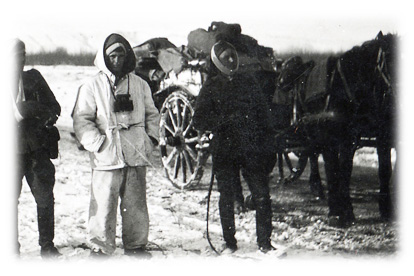
Ruined villages – abandoned farms – frostbite and fear of death – the stomach-churning discovery of a gully full of dead young Russians – all this gnawed at the young soldier. “What had these men done to me?” he asked himself. “Why did they have to die? For what? For whom?”
Sometime later his company captured an enemy platoon. Meeting the prisoners face to face he realized, to his horror, that they were not subhuman monsters as he had been indoctrinated to believe, but “human beings just like us, sighing with relief that their lives had been spared.”
Before entering a gunfight, Siegfried would often ask God to save his life. (Years later he said he wasn’t sure why he did this, since he could no longer even imagine a future without suffering and war.) Soon he was adding a promise to his prayers: “Dear Lord, if I survive, I will try to thank you in the right way!”
The chance for recompense came, but only after the war, and in a way he had not expected. In the meantime he came down with typhoid fever, which may have saved his life, since it ended his tour of duty on the Russian front. On recovering, he was promoted and reassigned to the Franco-Belgian border as the leader of a 40-man unit. It was there, in April 1945, that he was captured by American troops.
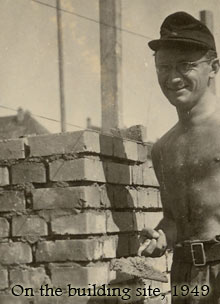
Imprisoned first in one POW camp, and then another, and then held in France for three years of forced labor (until 1948), Siegfried had no shortage of lonely hours during which to consider the nightmare of the previous years, and to solidify his deepening conviction that war was a senseless, unnecessary evil. It wasn’t only the wreckage around him – the bombed-out towns, empty-eyed mothers, and endless heaps of rubble – but a sickening realization that the glamorous propaganda of the Third Reich had masked the most devilish regime imaginable:
Now I heard the terrible reality: that millions of Jews had been murdered – killed in concentration camps, tortured and tormented, along with countless other so-called inferior peoples. Germans, too, had lost their lives, after having recognized Hitler and the Nazis [for what they were], and resisting them. What did it mean now, that my life had been saved?
In contemplating the past, Siegfried refused to take shelter in the thought (common enough among soldiers of his generation) that he had simply “done his duty” or been swept helplessly along by the tides of history or fate. On the contrary, he felt personally responsible for his past – and so strongly that he saw his stint of forced labor as an act of contrition:
These years, which brought me into close contact with people I had previously fought, meant a great deal to me, despite the long separation from my loved ones. Indeed, I could accept this time as a kind of penance for my involvement in the war.
Fast-forward a quarter century, and the last outward signs of the war had been erased from the German landscape. In their place gleamed the twin pillars of the country’s postwar rebirth: the rewards of the Wohlstandsgesellschaft (affluent society) and the Wirtschaftswunder (economic miracle) that made “the good life” possible. For Siegfried, everything should have been perfect. He now had a wife, Renate, and two sons. A successful civil engineer, he had ascended from bricklayer’s yard to architect’s office, and then to the municipal building department where he now headed an agency. He and Renate owned their house and car, and could afford to take the children on vacations. And yet they still felt empty inside...
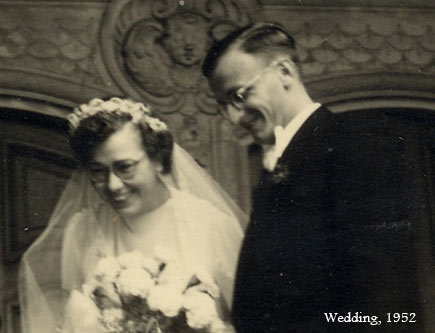
All through those years a search for God kept stirring in us. Our outer prosperity, which kept growing; my advance up the vocational ladder – that could not possibly be everything there was to life. But what might the practical consequences of this recognition look like? As time went on, we asked ourselves again and again: is this – marriage and family, career and church membership - the full meaning of our lives? Once, in a Bible study group, we read the beginning of the Gospel of St. Mark, about a few men at a lake, fishermen. Jesus had told them: follow me! And they had simply left their nets and followed him. These words struck our hearts.
By the early 1970s the Ellwangers’ search took wings, lifting them above the lures of cozy retirement and dropping them amid the untidy day-to-day realities of life in the Basisgemeinde (“base community”), a communal fellowship they founded with a small group of like-minded friends near Stuttgart:
In our own and other houses, members of our circle started to share their living space with others, and before long we began to hold our money in common as well. We were soon joined by people unable to cope with life on their own and casting about for help: the homeless and the unemployed, alcoholics and drug addicts. Little by little someone would give up his own occupation in order to build up a joint enterprise together with those in need of help. These were difficult years. Our enthusiasm was so great that we were sometimes carried away by this or that well-meant but all-too-human endeavor. We experimented with various psychological trends; and ambition and pride made our incipient communal life increasingly difficult. Yet we did want to love each other and be a living witness to true Christianity!
In all this Siegfried, one of the fledgling community’s oldest participants, was one of its boldest pioneers. As Renate recently recalled, it was he who, during a discussion about tithing, pulled out his wallet and said, “If we’re going to share, we may as well share everything.”
Jumping forward yet again, the Basisgemeinde evolved and grew. It now has two thriving branches in Germany. Siegfried and Renate meanwhile followed a further call to join the ranks of another communal movement – the Bruderhof. It was there that Siegfried spent his last years, active as ever, whether challenging an upstart to a game of chess, keeping up his voluminous correspondence with seekers across Europe, or educating youngsters on his own doorstep about the perils of racism, nationalism, and militarism, and the importance of brotherhood, justice, and peace.
Two incidents from the last weeks of his life bear mentioning here. The first was his response to a recent conference near Buchenwald that brought together concentration camp survivors with children and grandchildren of Nazis as they sought reconciliation on the basis of remorse and forgiveness. Hearing of the gathering, Siegfried said it was as if a dark cloud had lifted, giving him fresh hope that many others his age might yet find redemption and freeing from the past.
The second incident was his reaction on hearing that at a nearby school, several teens he knew had watched clips from U.S. Army recruitment videos and critiqued the slick propaganda they contain: “I gave my life, unwittingly, to the devil as a young man,” he said. “I am so happy that today’s youth have a chance to think about what it means to live for peace.”
At Siegfried’s funeral, as the last shovelfuls of earth covered his grave, a low-flying fighter jet hurtled out of nowhere and shot directly over the crowd. The ear-splitting roar took everyone by surprise, making a little girl cry, and shattering the peace of an otherwise beautiful service. But it also served as stark reminder that the conflict between the opposing forces of life and death – a conflict that marked Siegfried’s journey at so many points – is an ongoing one. It plays a role in every life, and forces each of us to ask again and again, “Which master will you serve?”
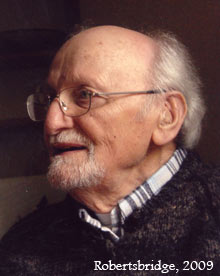

Did you know that Plough is published by the Bruderhof, a living community of people seeking to follow Jesus together?
Already a subscriber? Sign in
Try 3 months of unlimited access. Start your FREE TRIAL today. Cancel anytime.





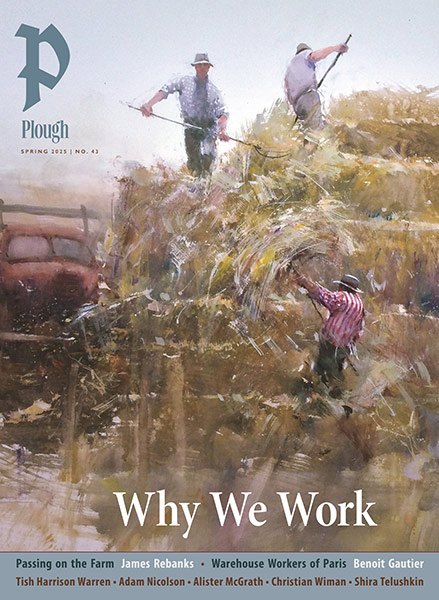

Marilyn Regentin
A touching story to read again and again. Redemption, forgiveness and celebration play a part in this reminder that every person has a story. When we know and understand the stories of others, we begin at last to truly see them as fellow travellers.
Robert Lautenschlager
Dear Siegfried, God bless and rest in Peace.